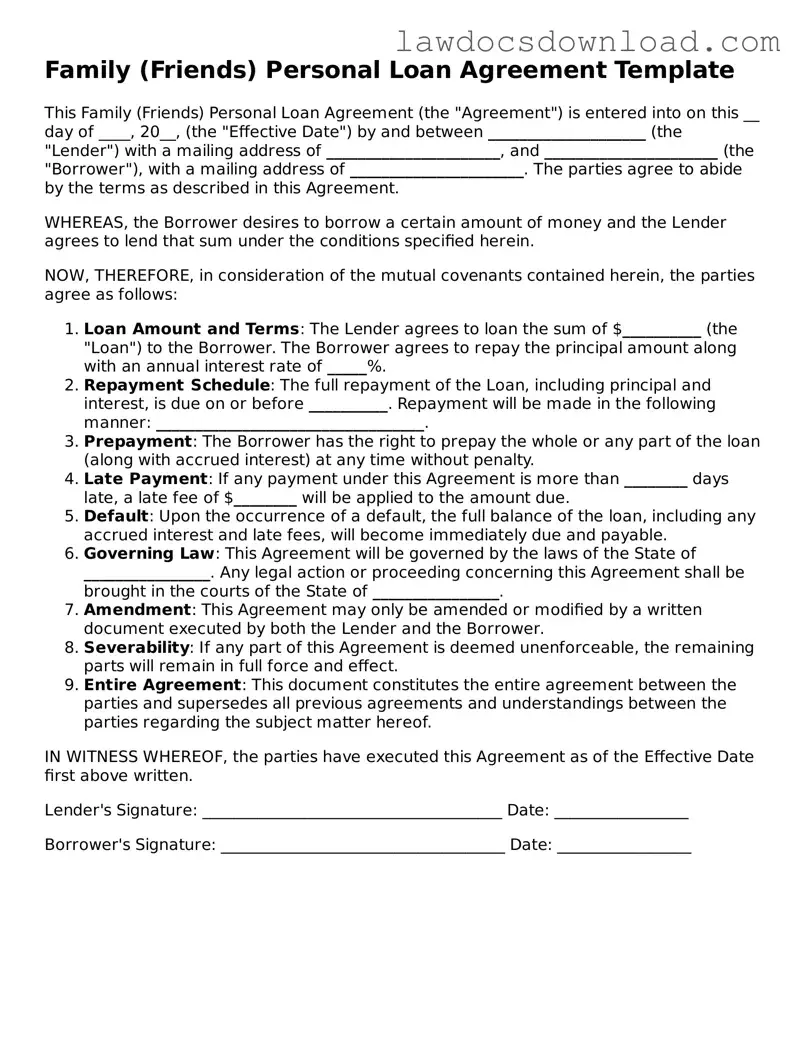Family (Friends) Personal Loan Agreement Template
This Family (Friends) Personal Loan Agreement (the "Agreement") is entered into on this __ day of ____, 20__, (the "Effective Date") by and between ____________________ (the "Lender") with a mailing address of ______________________, and ______________________ (the "Borrower"), with a mailing address of ______________________. The parties agree to abide by the terms as described in this Agreement.
WHEREAS, the Borrower desires to borrow a certain amount of money and the Lender agrees to lend that sum under the conditions specified herein.
NOW, THEREFORE, in consideration of the mutual covenants contained herein, the parties agree as follows:
- Loan Amount and Terms: The Lender agrees to loan the sum of $__________ (the "Loan") to the Borrower. The Borrower agrees to repay the principal amount along with an annual interest rate of _____%.
- Repayment Schedule: The full repayment of the Loan, including principal and interest, is due on or before __________. Repayment will be made in the following manner: __________________________________.
- Prepayment: The Borrower has the right to prepay the whole or any part of the loan (along with accrued interest) at any time without penalty.
- Late Payment: If any payment under this Agreement is more than ________ days late, a late fee of $________ will be applied to the amount due.
- Default: Upon the occurrence of a default, the full balance of the loan, including any accrued interest and late fees, will become immediately due and payable.
- Governing Law: This Agreement will be governed by the laws of the State of ________________. Any legal action or proceeding concerning this Agreement shall be brought in the courts of the State of ________________.
- Amendment: This Agreement may only be amended or modified by a written document executed by both the Lender and the Borrower.
- Severability: If any part of this Agreement is deemed unenforceable, the remaining parts will remain in full force and effect.
- Entire Agreement: This document constitutes the entire agreement between the parties and supersedes all previous agreements and understandings between the parties regarding the subject matter hereof.
IN WITNESS WHEREOF, the parties have executed this Agreement as of the Effective Date first above written.
Lender's Signature: ______________________________________ Date: _________________
Borrower's Signature: ____________________________________ Date: _________________
